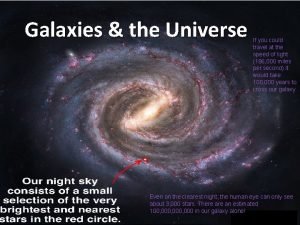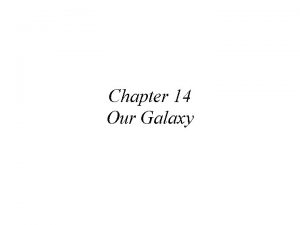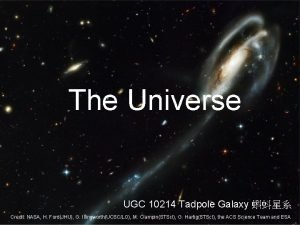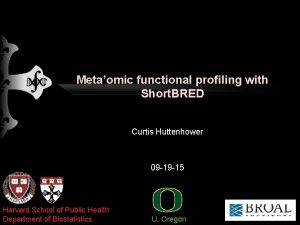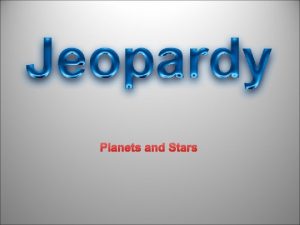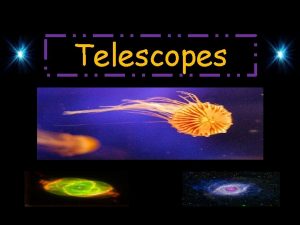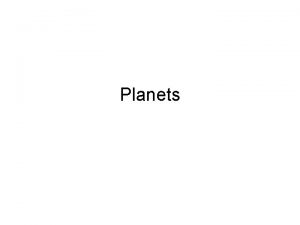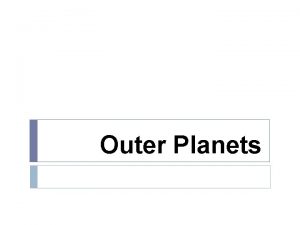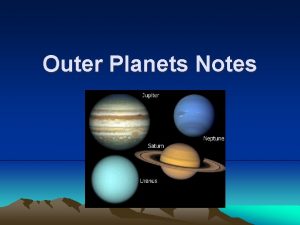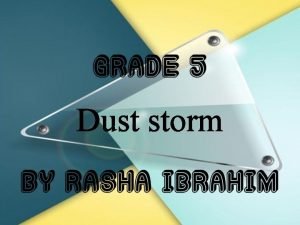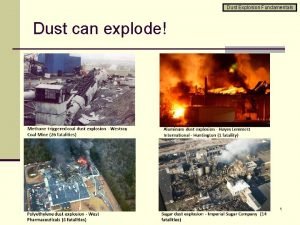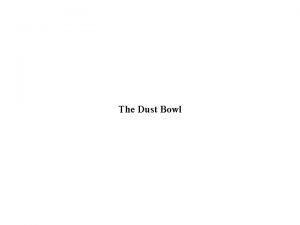SPACE UNIT GALAXY COMPONENTS Gas Dust Stars PLANETS












- Slides: 12

SPACE UNIT

GALAXY COMPONENTS • Gas • Dust • Stars

PLANETS IN OUR SOLAR SYSTEM Planet Mercury Venus Earth Mars Jupiter Saturn Uranus Neptune Mnemonic My Very Excellent Mother Just Served Us Nachos

PLANETS IN OUR SOLAR SYSTEM • • • Inner Planets Both Mercury, Venus, Earth, Mars Small • Has mass Closest to the Sun • Rotates on an axis Hotter • Revolves around a Solid surfaces star Greater density Diverse atmosphere • • • Outer Planets Jupiter, Saturn, Uranus, Neptune Massive Further away Larger Made mostly of gas Less density Similar atmospheres

CHARACTERISTICS OF STARS • BRIGHTNESS • SIZE • APPEARANCE BASED ON DISTANCE • STARS EMIT ENERGY

CHARACTERISTICS OF STARS: SIZE AND COLOR • Color of a star determines its temperature. • Blue Giants and Red Giants are the largest starts • Dwarf stars are the smallest in size • The Sun is a medium-sized star • Blue stars are the hottest, while red stars are cooler. • The Sun is a yellow star which has average temperatures for a star.

THESE ALL THESE STARS ARE THE SAME SIZE, WHY MIGHT SOME APPEAR LARGER? STARS CLOSER TO EARTH AND STARS THAT ARE BRIGHTER MAY APPEAR LARGER.

APPEARANCE OF STARS Stars APPEAR to move across the night sky due to Earth’s rotation on its axis.

THE SUN • Is a star • Emits light and heat • Its gravitational pull keeps the planets in orbit • It looks large and bright because it’s so close to Earth • Medium-sized and average temperature

ASTEROIDS VS. COMETS Asteroids metal Both rocky material Form close to the Sun produce meteoroids Shorter orbits around Sun (called meteors when they enter earth’s atmosphere) orbits the sun Comets ice dust Form far from the Sun, long orbits tails

MOON VS. EARTH Moon smaller no atmosphere Many craters, dry About a 28 day rotation Orbit a planet Both round mountains plains rocky Earth larger atmosphere 70% water few craters About a 24 hour rotation Orbit the Sun

PHASES OF THE MOON • 1 revolution takes about a month
 Galaxys
Galaxys Jupiler
Jupiler Why do disk stars bob up and down as they orbit the galaxy?
Why do disk stars bob up and down as they orbit the galaxy? Four outer planets
Four outer planets What separates inner and outer planets
What separates inner and outer planets What separates the inner planets and outer planets
What separates the inner planets and outer planets Inner terrestrial planets
Inner terrestrial planets Are jovian planets more dense than terrestrial
Are jovian planets more dense than terrestrial There are three sizes of schnauzer dog
There are three sizes of schnauzer dog The formation of the solar system
The formation of the solar system How to wear a jrotc uniform
How to wear a jrotc uniform Definition of irregular galaxy
Definition of irregular galaxy Galaxy huttenhower
Galaxy huttenhower

